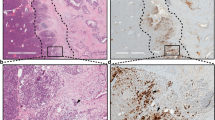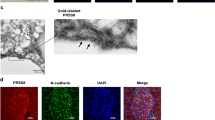Abstract
Important differences exist in the responses to photodynamic agents of normal and tumour-derived pancreatic acinar cells. In the present study amylase release has been used to assess the mechanisms by which the photodynamic drugs tetra- and disulphonated aluminium phthalocyanine (A1PcS4, A1PcS2) act on pancreatic cells via energy and calcium-dependent activation and transduction pathways. The photodynamic release of amylase was found to be energy dependent and inhibited by the chelation of free cytoplasmic calcium but not by the removal of extracellular calcium. In contrast to their effects on normal acinar cells, the photodynamic action of A1PcS4 and A1PcS2 was to inhibit amylase secretion from pancreatoma AR4-2J cells. Removal of extracellular calcium reversed this inhibitory effect on AR4-2J cells and produced a significant increase in amylase release, but chelation of free cytoplasmic calcium did not affect the inhibitory photodynamic action of the phthalocyanines on amylase release from the tumour cells. Overall, these results demonstrate further important distinctions between the photodynamic action of sulphonated aluminium phthalocyanines on normal versus tumour exocrine cells of the pancreas and indicate that calcium plays an important role in photodynamic drug action, since these agents affected intracellular calcium mobilisation at some distal point in the membrane signal transduction pathway for regulated secretion. Furthermore, the photodynamic inhibition of constitutive secretion in tumour cells may involve a calcium-dependent membrane target site or modulation of membrane calcium channels by activation of protein kinase C.
This is a preview of subscription content, access via your institution
Access options
Subscribe to this journal
Receive 24 print issues and online access
$259.00 per year
only $10.79 per issue
Buy this article
- Purchase on SpringerLink
- Instant access to full article PDF
Prices may be subject to local taxes which are calculated during checkout
Similar content being viewed by others
Author information
Authors and Affiliations
Rights and permissions
About this article
Cite this article
al-Laith, M., Matthews, E. Calcium-dependent photodynamic action of di- and tetrasulphonated aluminium phthalocyanine on normal and tumour-derived rat pancreatic exocrine cells. Br J Cancer 70, 893–899 (1994). https://doi.org/10.1038/bjc.1994.416
Issue Date:
DOI: https://doi.org/10.1038/bjc.1994.416
This article is cited by
-
Influence of topical photodynamic therapy with 5-aminolevulinic acid on porphyrin metabolism
Archives of Dermatological Research (1996)



